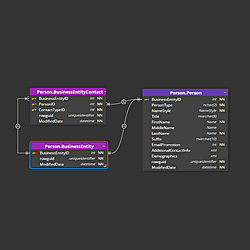In today’s data-driven world, effective data modeling is crucial for any organization that wants to make the most of its information resources. One of the most useful methods for creating a data model is the entity-relationship diagram (ER Diagram), which provides a visual representation of the relationships between different data entities.
Creating effective ER diagrams is easy with the Luna Modeler data modeling tool. In this article, we’ll explore a few examples of entity and relationship diagrams created with Luna Modeler.
What is an Entity-Relationship Diagram?
An entity-relationship diagram is a visual representation of the relationships between different entities in a data model. ER diagrams use symbols and connectors to represent entities and relationships, and they can be used to illustrate the structure of a database or the relationships between different business entities.
Creating Effective ER Diagrams with Luna Modeler
Luna Modeler is a powerful data modeling tool that makes it easy to create ER diagrams. With its intuitive interface and powerful features, Luna Modeler is the perfect tool for data modelers, database developers, and anyone else who needs to create effective ER diagrams. Here are some entity-relationship diagram samples:
ER diagram – PostgreSQL: Pagila
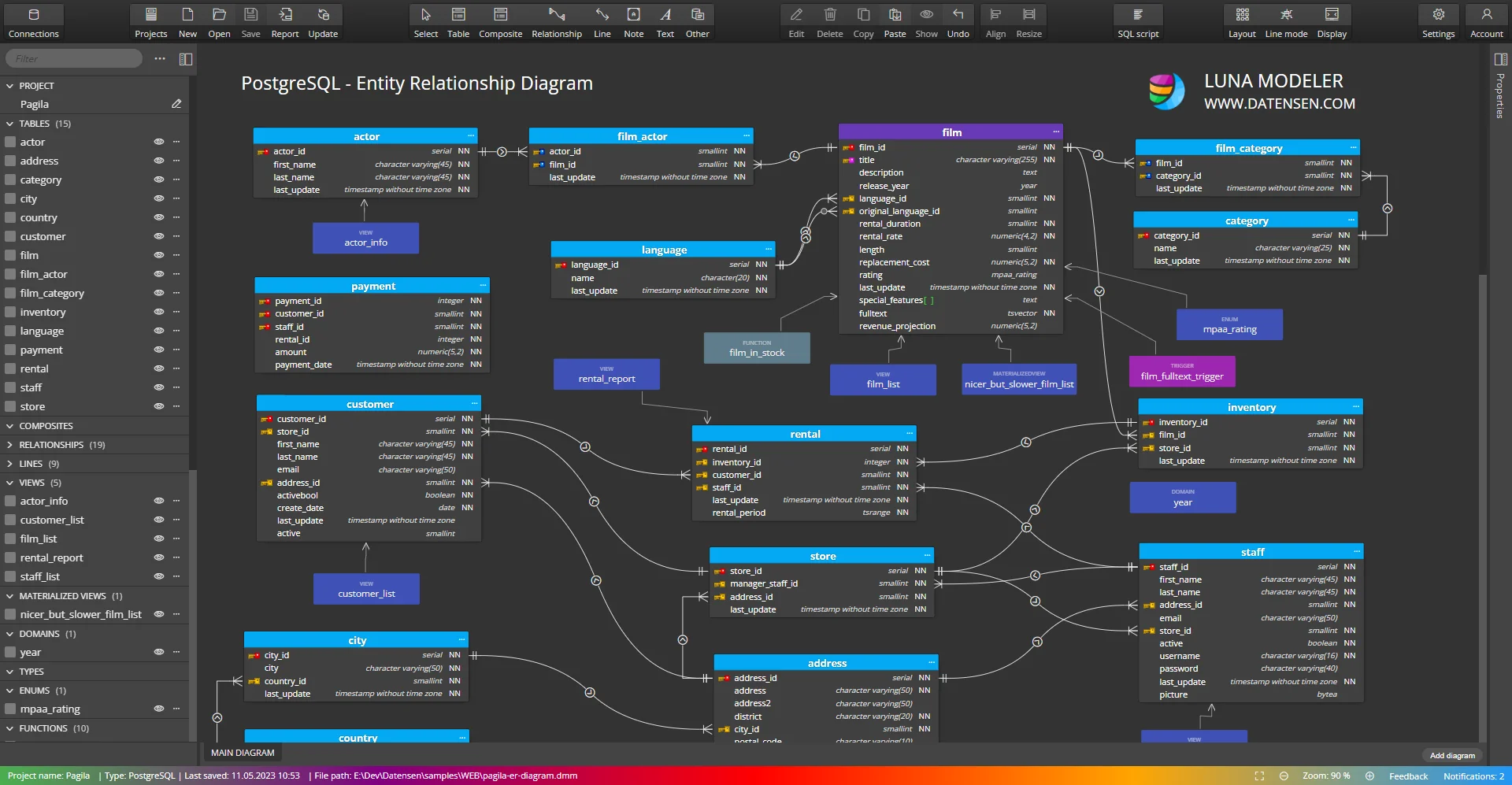
ER diagram – SQL Server: AdventureWorks
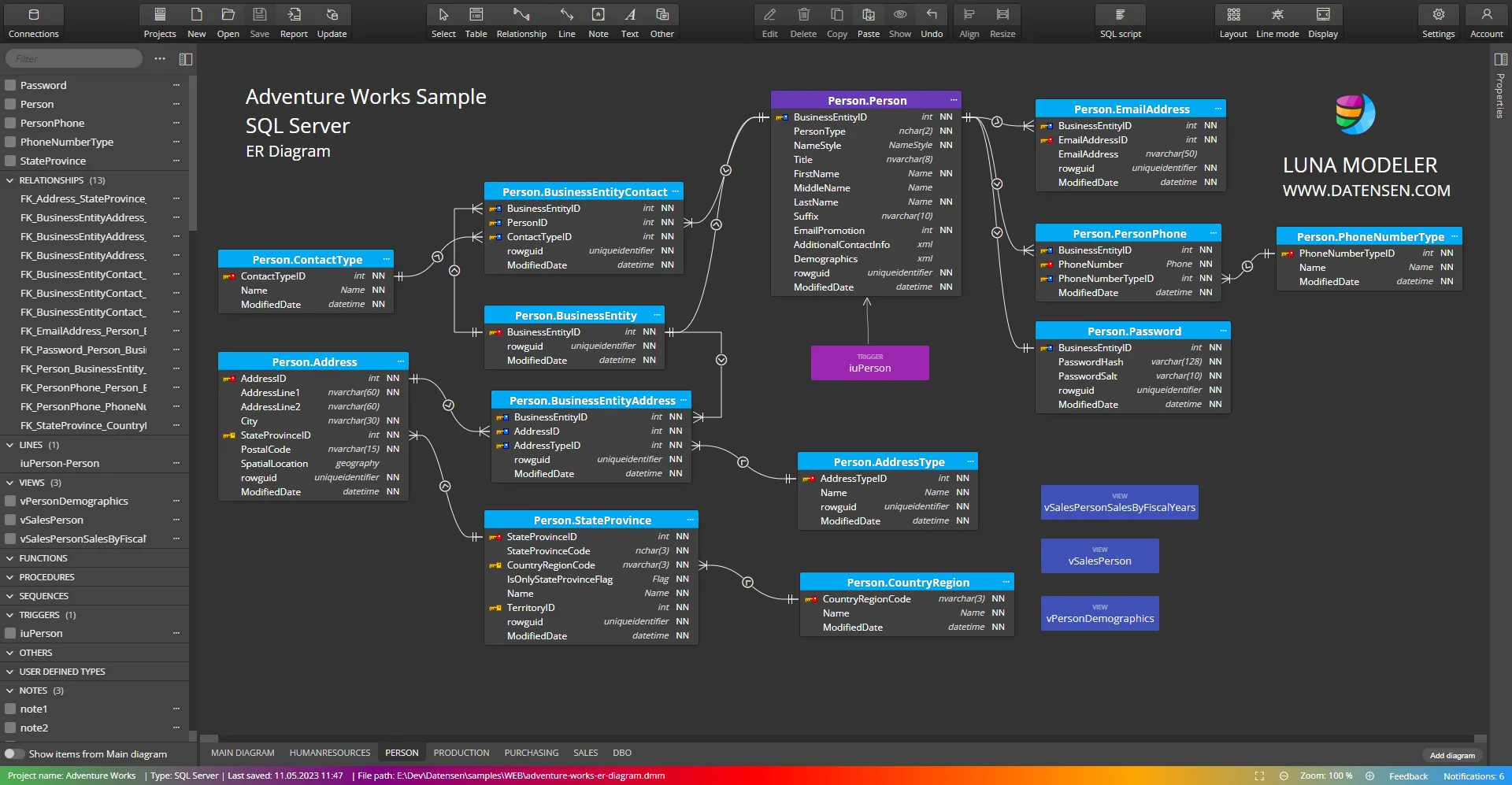
Learn more on how to work with the AdventureWorks sample in Luna Modeler.
ER diagram – MariaDB: Sakila
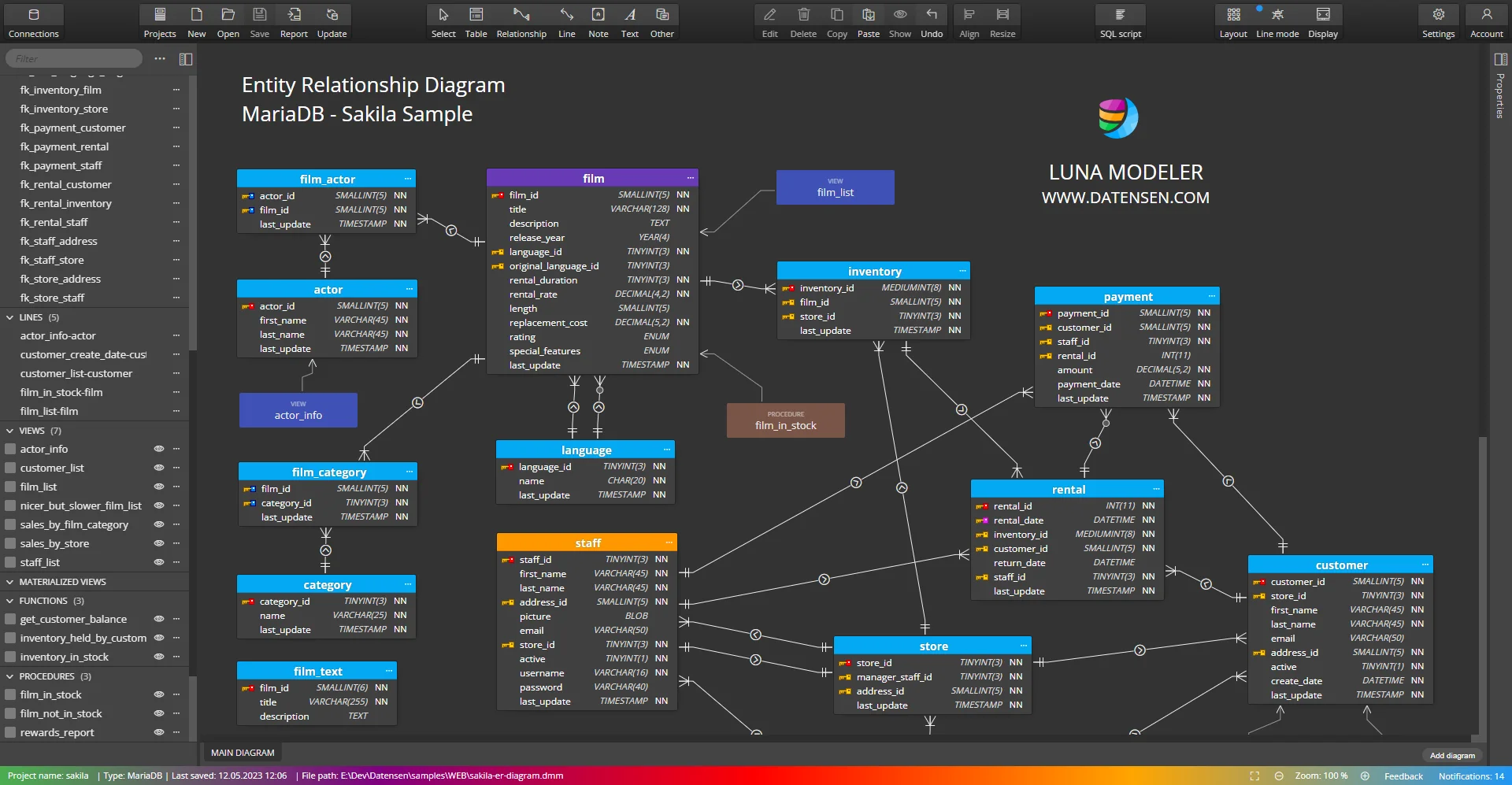
ER diagram – SQLite: Chinook
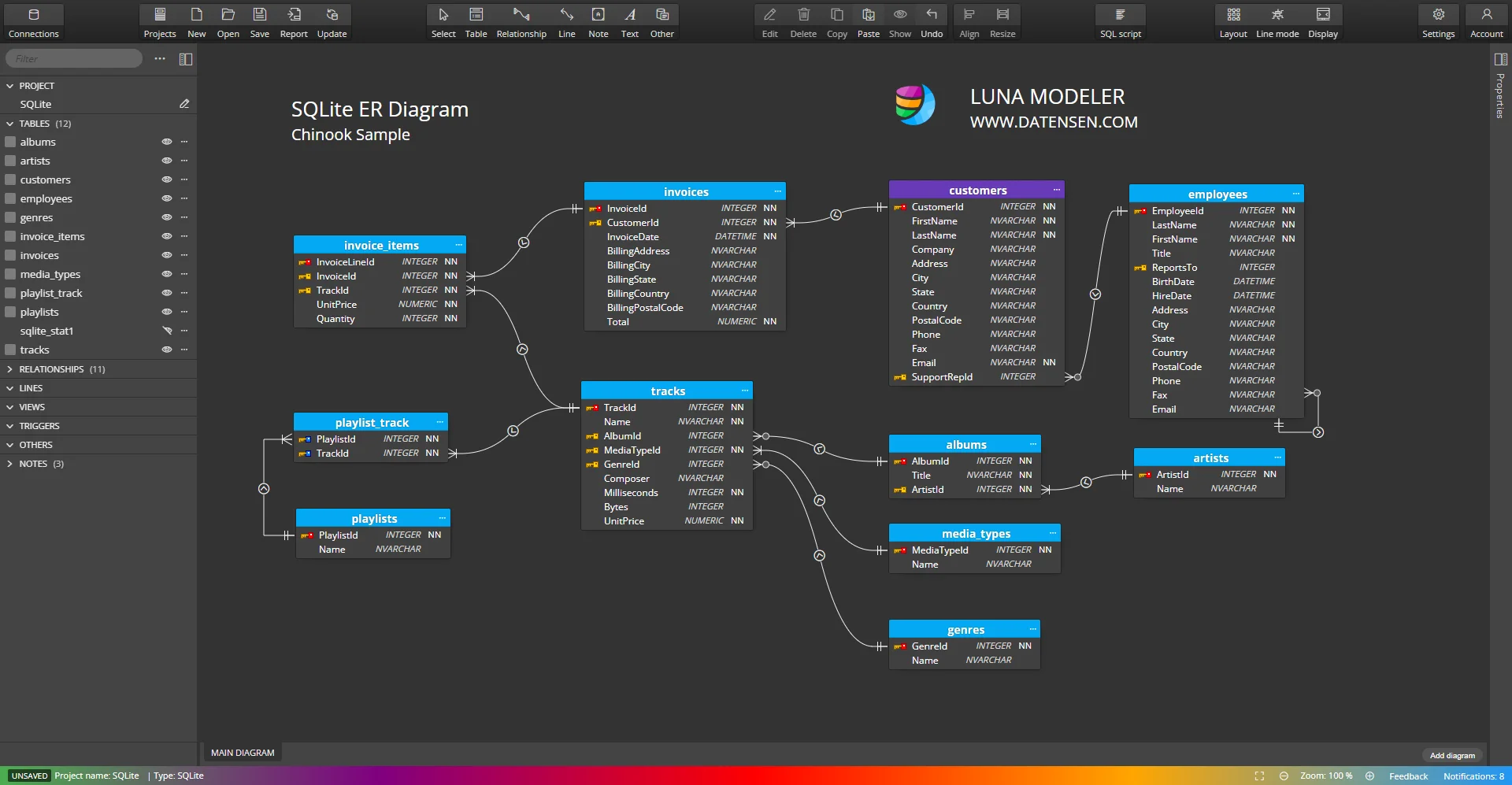
Conclusion
Luna Modeler makes it easy to create accurate and easy-to-read ER diagrams for effective data modeling. These diagrams can be used to design databases for a wide range of applications, ensuring that data models are accurate, efficient, and scalable. By using ER diagrams, organizations can establish a solid foundation for effective data management and analysis.
#
